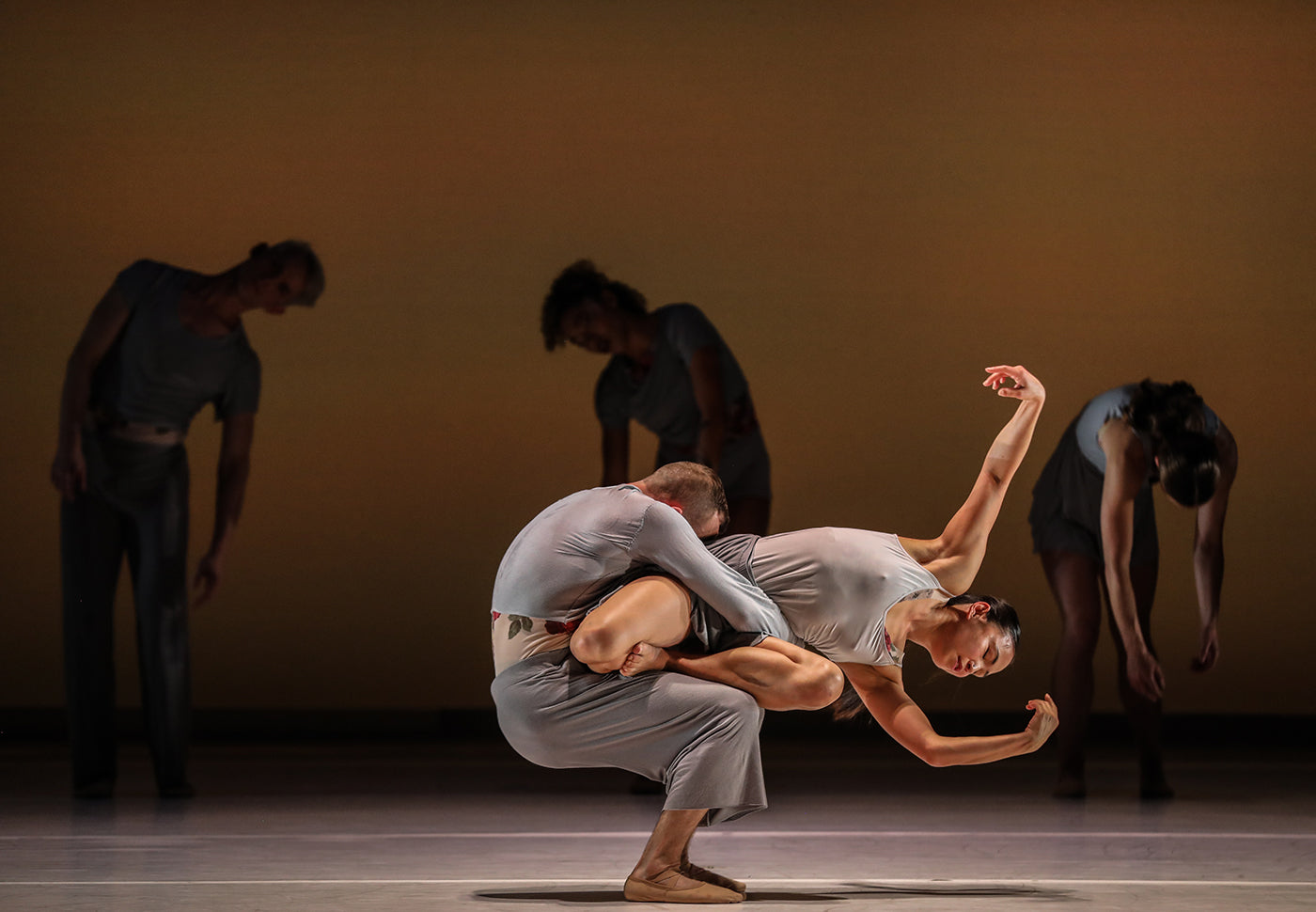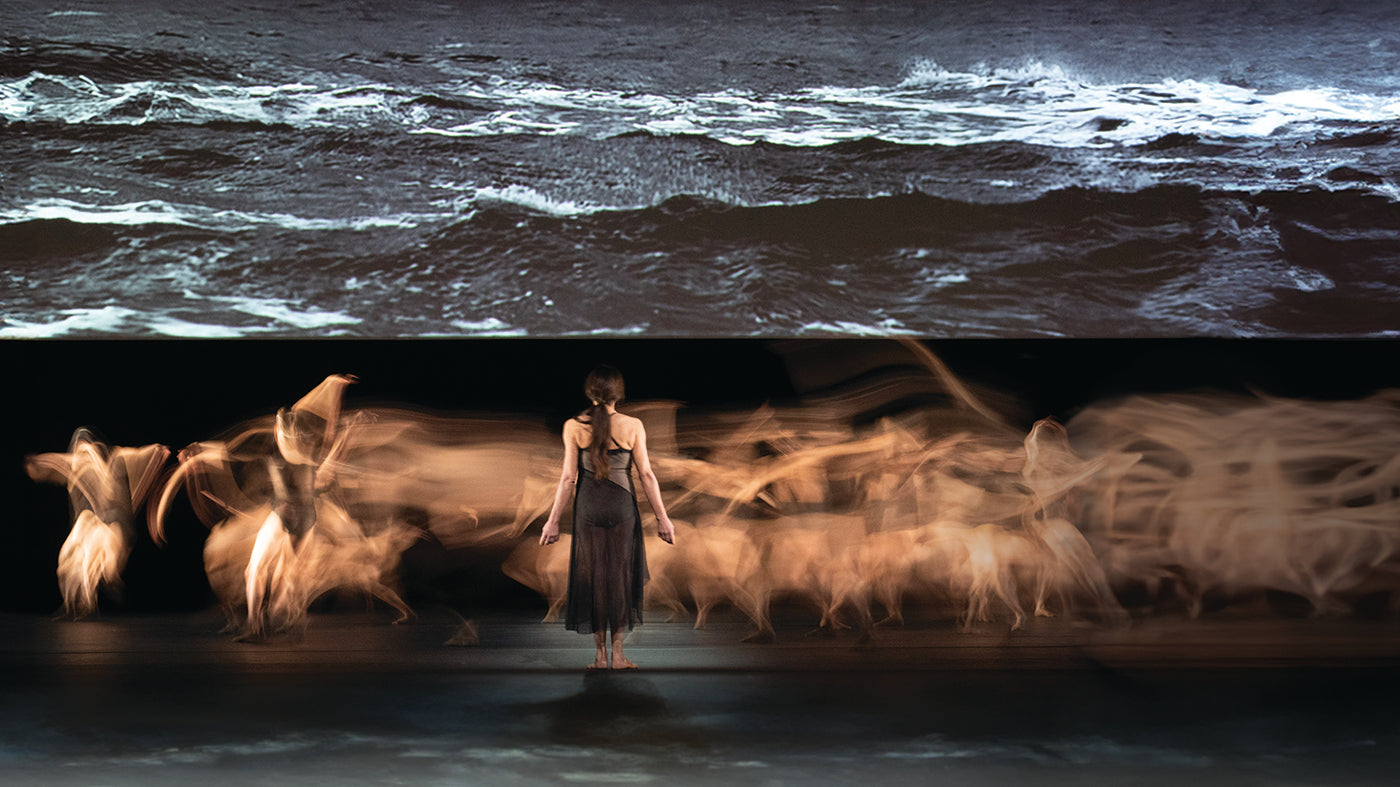The visual nature of Shakespeare’s The Tragedy of Romeo and Juliet (plausibly dated 1595) has proven a perfect fit for story telling through dance; Ashton, Cranko, MacMillan, and Murphy are but a few to have rubbed shoulders with the ‘star-cross’d lovers,’ and to their esteemed company in Castle Capulet we can now add Stanton Welch’s new choreographic work, as artistic director for Houston Ballet, “Romeo and Juliet” (2015). What Shakespeare, and in turn Welch, intended as series of moving pictures now glimmers exquisitely. And in what is, in ballet’s hands, not two but, with intervals’ pause, a little closer to three “hours' traffic of our stage;
….if you with patient ears attend,
What here shall miss, our toil shall strive to mend.”[note]Prologue from William Shakespeare’s The Tragedy of Romeo and Juliet, Folger Digital Shakespeare Library[/note]
Set once more in ‘fair Verona,’ our tragedy unfolded in lifts and leaps, and barely rested. Actions and words in Shakespeare’s hands were given equal weight in “Romeo and Juliet,” and Welch has contributed to the glorious confusion, giving the audience ‘its eye in’ and plenty of swordplay. Just as Shakespeare wanted the audience to look as well as listen, Welch dazzled me with controlled merry-making, creating something of an embellished tapestry fit for a castle wall hanging, and it was best viewed not once, but twice. With so much happening and a large cast of new faces to learn, in addition to reacquainting myself with the tale, fear-of-missing-out was keenly evoked.
Houston Ballet, presented by the Australian Ballet, who are currently on tour in London (with Ratmansky’s “Cinderella” and Murphy’s “Swan Lake”) and in regional Victoria (“Giselle”), appear to share a narrative-driven approach and working ethos, and, of course, Welch, resident choreographer with the Australian Ballet and former leading soloist with the company. For Houston Ballet’s first tour to Australia, a lavish production and a homecoming for Welch, showed itself to be as bright in reality as on paper. Or rather, shone as bright as the bejewelled tunics and long shimmering gowns of Roberta Guidi di Bagno, and the stars who wore them, and made real, a series of stage pictures like Renaissance paintings brought to life.
Both Antonio del Pollaiuolo’s Portrait of a Young Lady (c.1465), with her blood-red brocade worthy of a Capulet, and Pisanello’s Portrait of Leonello d’Este (c.1444) would have been able to slip into scene five’s Ball and see Romeo steal an all-too-brief, fate-sealing kiss from Juliet. From such a rich period, with their universal yet singular focus upon the face, a story telling must-have, Oliver Halkowich’s Benvolio and Derek Dunn’s Balthasar, appeared to have stepped. In possession of an aristocratic chin, Christopher Coomer’s Tybalt, and displaying a sardonic eyebrow raise, Charles-Louis Yoshiyama’s Mercutio. Why, it was as if these profile portraits had spun around and revealed all planes of their faces! Jared Matthews as both (Tuesday’s) Romeo and (Wednesday’s) Mercutio, the effortless epitome of acting over mime.
Representative of a time when conventions were binding and refinement was shown through a (plucked) high forehead, with a padded balzo upon her crown, in Jessica Collado’s Lady Capulet, a portrait by Filippo Lippi was made flesh. Later when Collado and her ilk donned giant domed capigliara-like headpieces that recalled spun sugar, the effect was complete: a painting had truly been brought to life, roaring. Such a headpiece that befitted said Ball and the advancing power strut of Prokofiev’s “Dance of the Knights” that threatened to fall into the orchestra pit were it not for a succession of superb back-bends following the one-step-forward-two-steps-back principle. Here, costume was to tell story and to entertain, and it doffed its hat at film versions as much as the works of Andrea Mantegna’s power-cloaked and hungry Cardinals. As Guidi di Bagno explained, “it’s wonderful to be able to tell the story, trying to translate the images that the choreographer has in mind. . . . If you know where the borders are in the story, then you can reinvent and move your characters according to your own fantasy.”[note]Roberta Guidi di Bagno quoted by Kate Scott in “Grand Designs,” Romeo and Juliet programme, Melbourne, Victoria, 2016, 13[/note]
The mastery of Shakespeare’s Romeo and Juliet and in Welch’s choreography remains the constant flow of stage groupings that dissolve and regroup as the tension increases. Forming ever-shifting patterns framed by sumptuous tapestries, tumbling silk curtains, and the twinkle of coloured glass, the fluidity of movement was enhanced by staging that (actually) moved with the story. Adding depth and meaning in this manner, and ripe with symbolism, these moving pictures were repeated throughout, and the eye was guided by colour. Further following the conventions of a painting, the dancers in the foreground and middle-ground were the focus, their forms drawn by the clever employment of negative space, thrown into sharp relief against the (appearance of) stonework.
Reduplications and reprisals, wedded to the score Welch has remained faithful to, enhanced the ‘visual rhyme,’ ‘such sweet sorrow’ indeed. The looped patterns perfectly suited to dance, were used to drive the narrative forward. Incremental, and yet, I was unaware of the structure; I was caught up in the splendour of the symmetrical assemblies behind the slain Tybalt and Mercuito. Rival houses, red and blue, were mediated by the gold of the House of Escalus (of which Mercuito, the Prince of Verona and Pairs all belonged), in this work about opposites in every sense. Love and hate, young and old, light and dark. Tragedy was balanced in the well-timed comedic form of a Nurse, Barbara Bears, who likes a tipple on pointe, and Romeo’s high-stepping, chest-puffing, hijinks-loving friends, Mercutio, Benvolio and Balthazar. Bears, Yoshiyama/Matthews, Halkowich and Dunn all made laughter through movement feel natural. As with Linnar Looris and Collado as Lord and Lady Capulet, their movement told a story and became a dance (as opposed to movement that fills in the story for the audience or pads out the music between the ‘dance bits’).
In the infamous balcony scene I had been waiting for, when Romeo appeared he glided onto the stage. In full sweep, an ink blue cloak trailed behind him and I was instantly reminded of a bird with incredible, jaw-dropping plumage performing a similar serenade for a potential mate; it felt such an earnest display. Juliet was literally, rightly, swept away, and in the pair, the embodiment of youth’s invincible air. A heartfelt belief that love is and can conquer all was infused in every fibre of Tuesday night’s young lovers, Sara Webb and Jared Matthews, and Wednesday night’s Karina Gonzalez and Connor Walsh. In both Gonzalez and Webb’s Juliet, the feather-light sway when airborne, and the excited and aquiver beat of the legs. Later, the straight-armed lift in compliance to Paris told the complete and sorry tale.
Wooed like Juliet. Smitten like Romeo. Together, Gonzalez and Walsh echoed the recurring pattern of speech that is in Shakespeare. And in illustration of the climbing tension, Gonzalez’s first (sleeping) death was perfectly restrained, so that when we finally grieved for her in the brilliance of the candle-lit crypt, the full tragedy was felt. The true weight carried not just by the players on the stage, but by the helpless onlookers Shakespeare and Welch made of the audience, packed tight in the theatre, marvelling at tragedy. Knowing full well that Juliet will soon take her curtain call with Romeo, and some time later, backstage, Gonzalez will reappear as Juliet’s costume is shed: “This ballet is all about emotions so after the show I’m still sad and crying, sometimes for half an hour. You give everything while you’re there and there are moments where I’ll keep hugging my partner because in those three hours he’s made me feel how I needed to be.”[note]Karina Gonzalez in interview with Jane Albert in “That Special Bond,” Romeo and Juliet programme, 11, 2016[/note]
There is comfort in knowing that the skins that have been so fully inhabited are not fixed. This is storytelling in all its beauty, as convincing as it is entertaining. Full throttle, more is more. This is death made palatable by a sparkly-robed Friar. For it is a tragic tale in which the elderly are left to mourn the young too-soon in the crypt. As in the play where words relate to action, here movement related to score, and we were left to consider the bigger picture. The ‘huge waste’ of it all!









comments